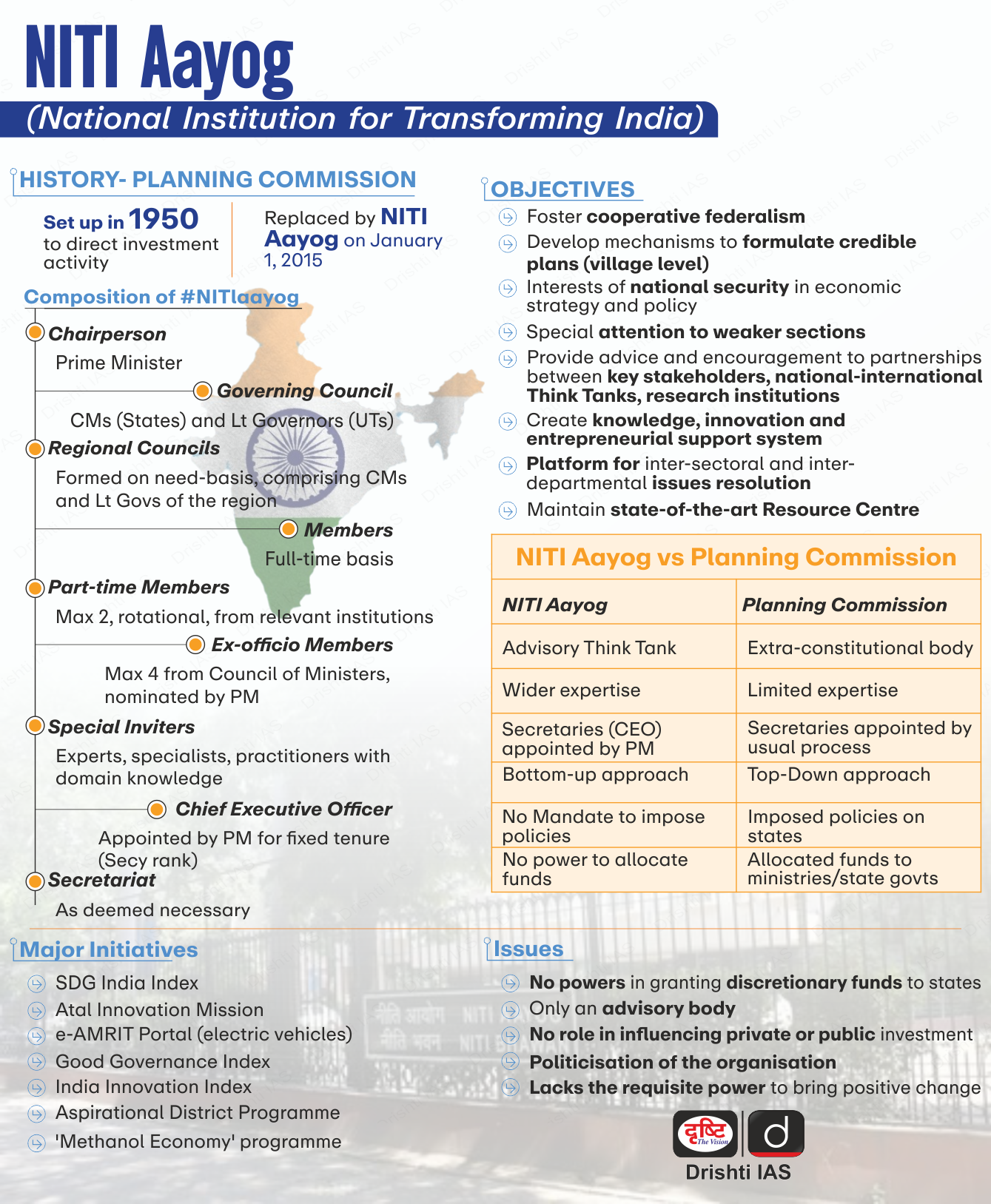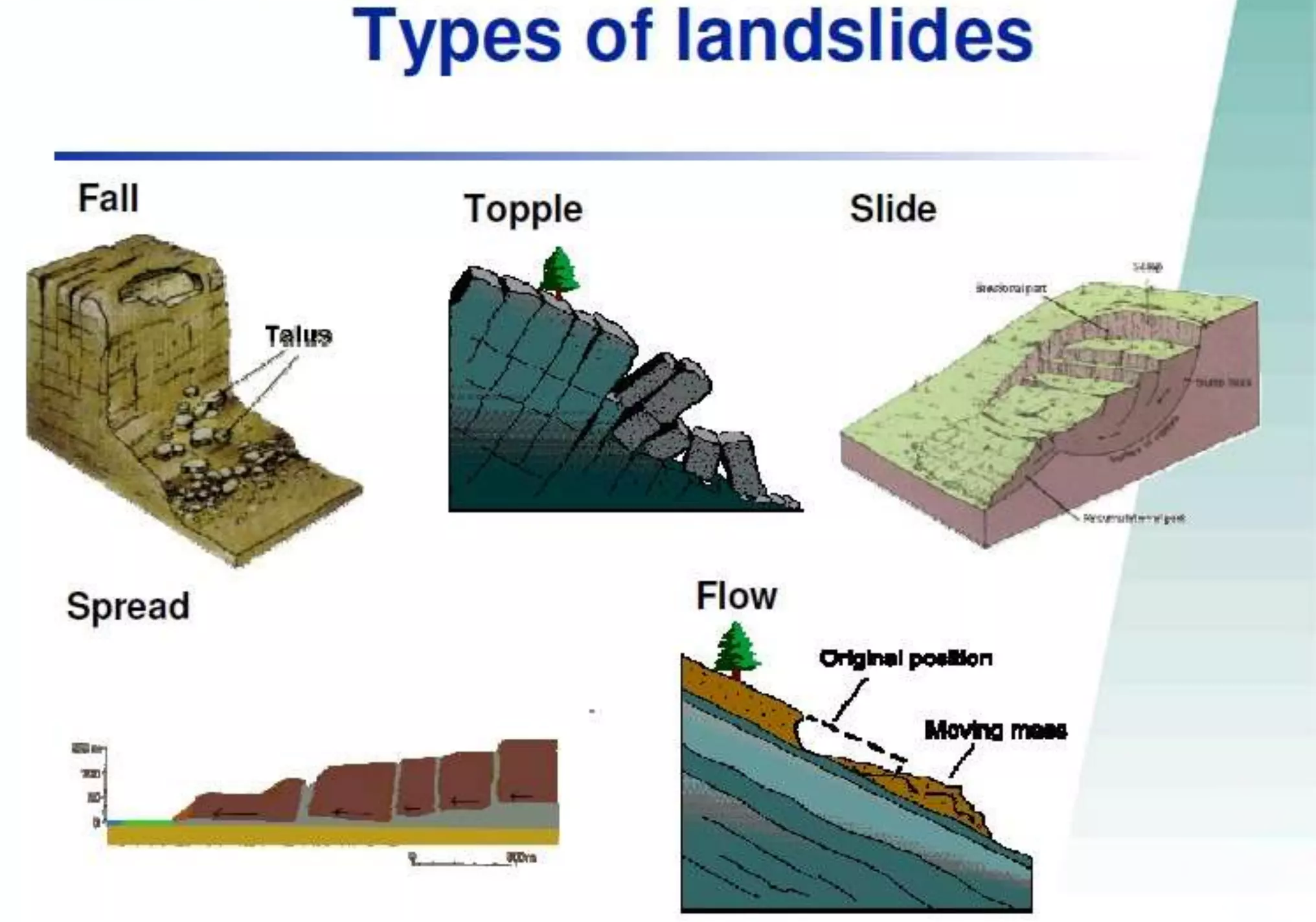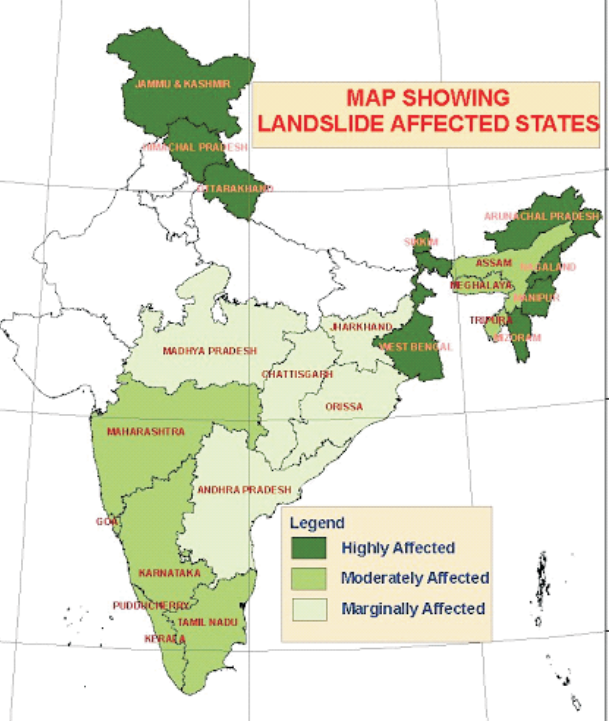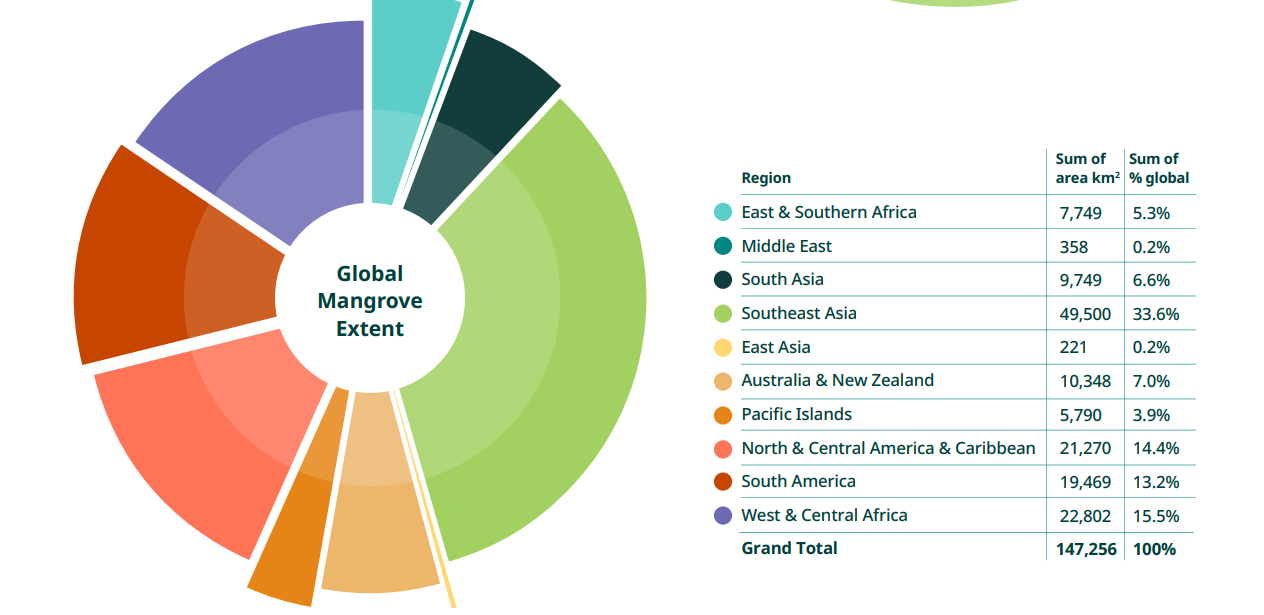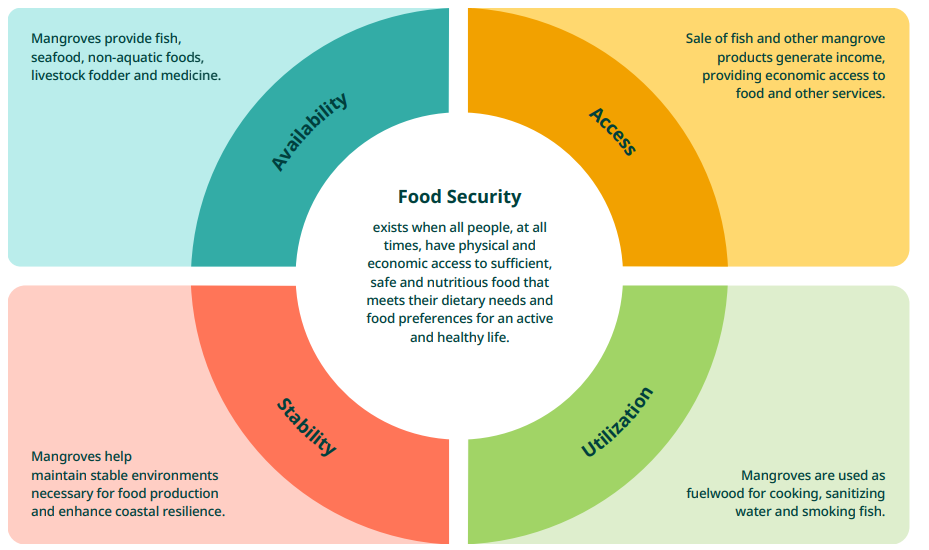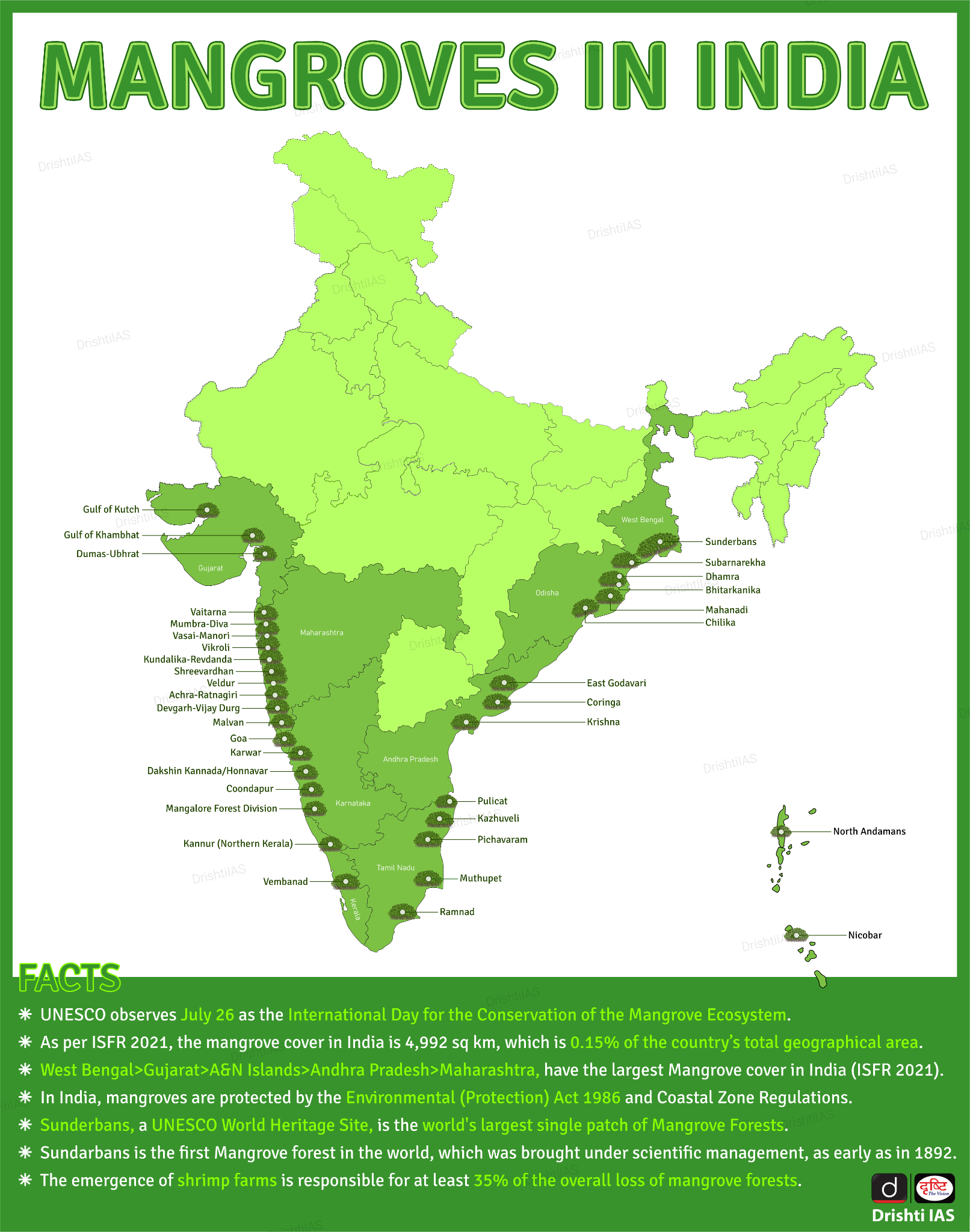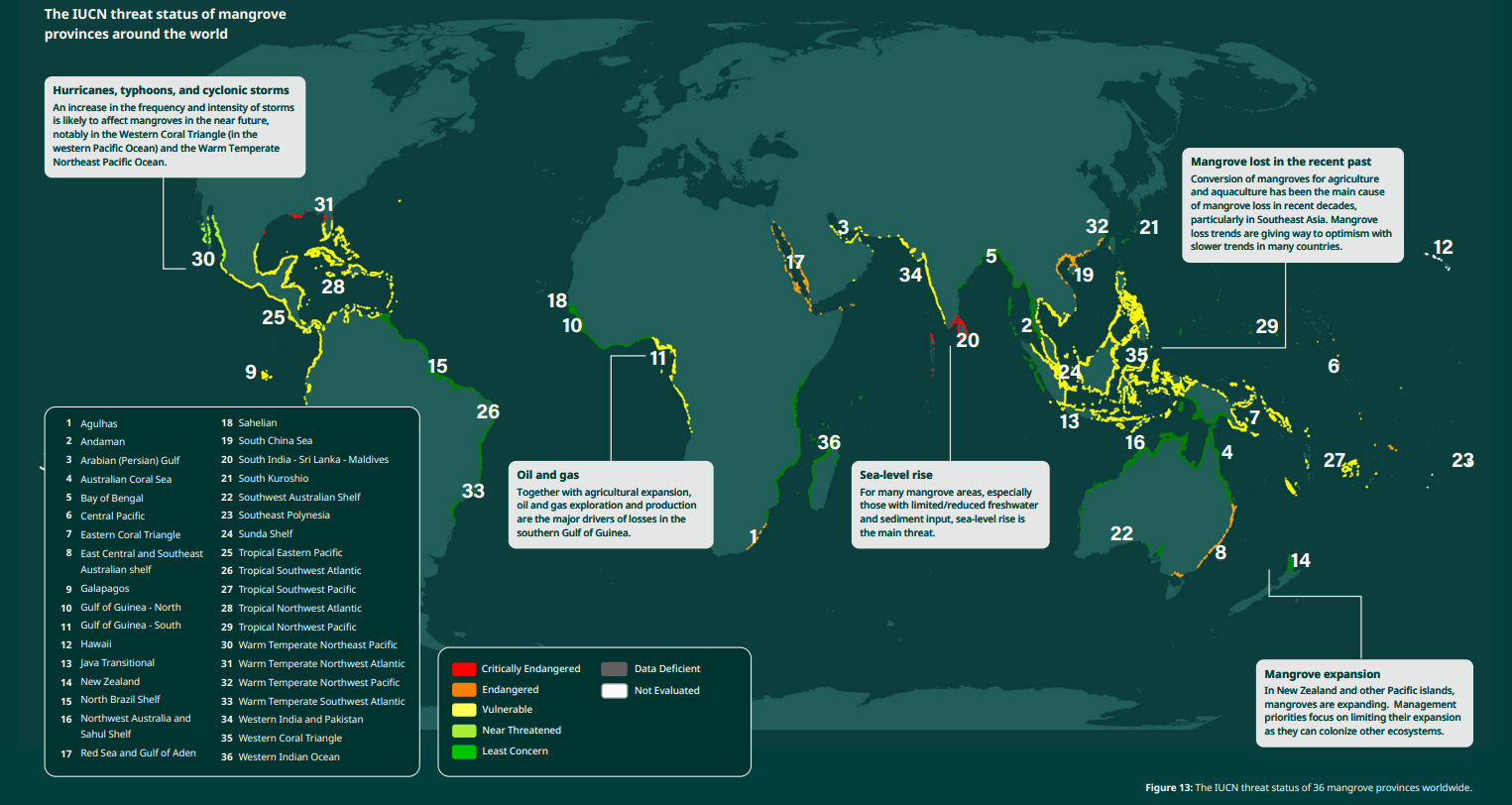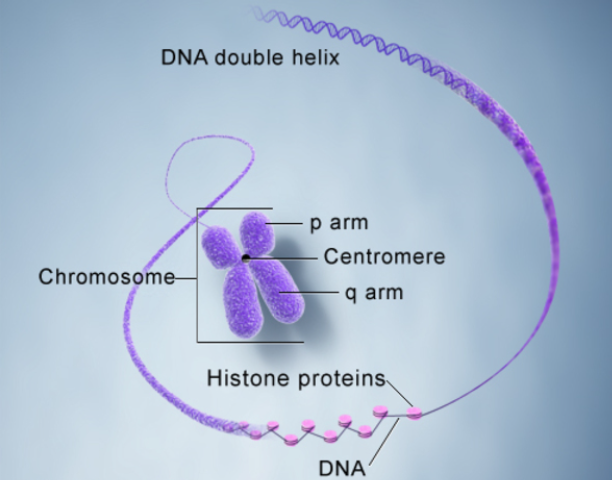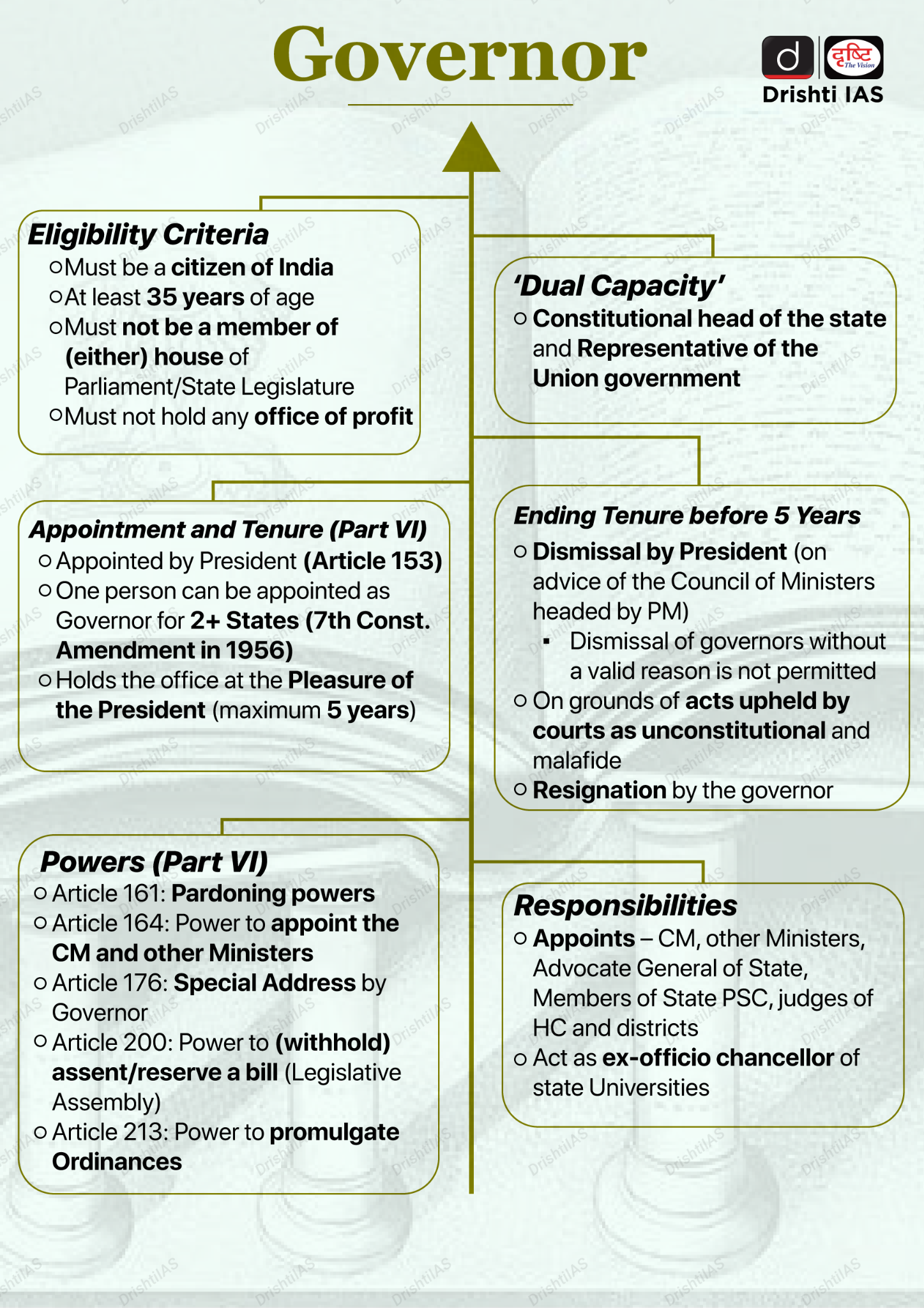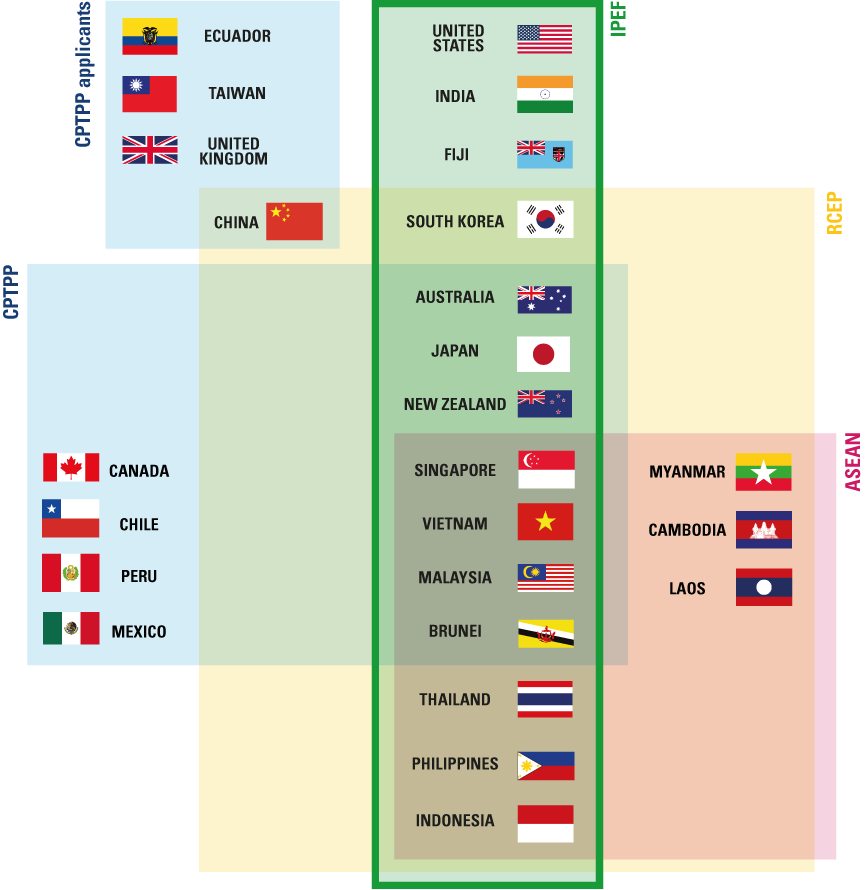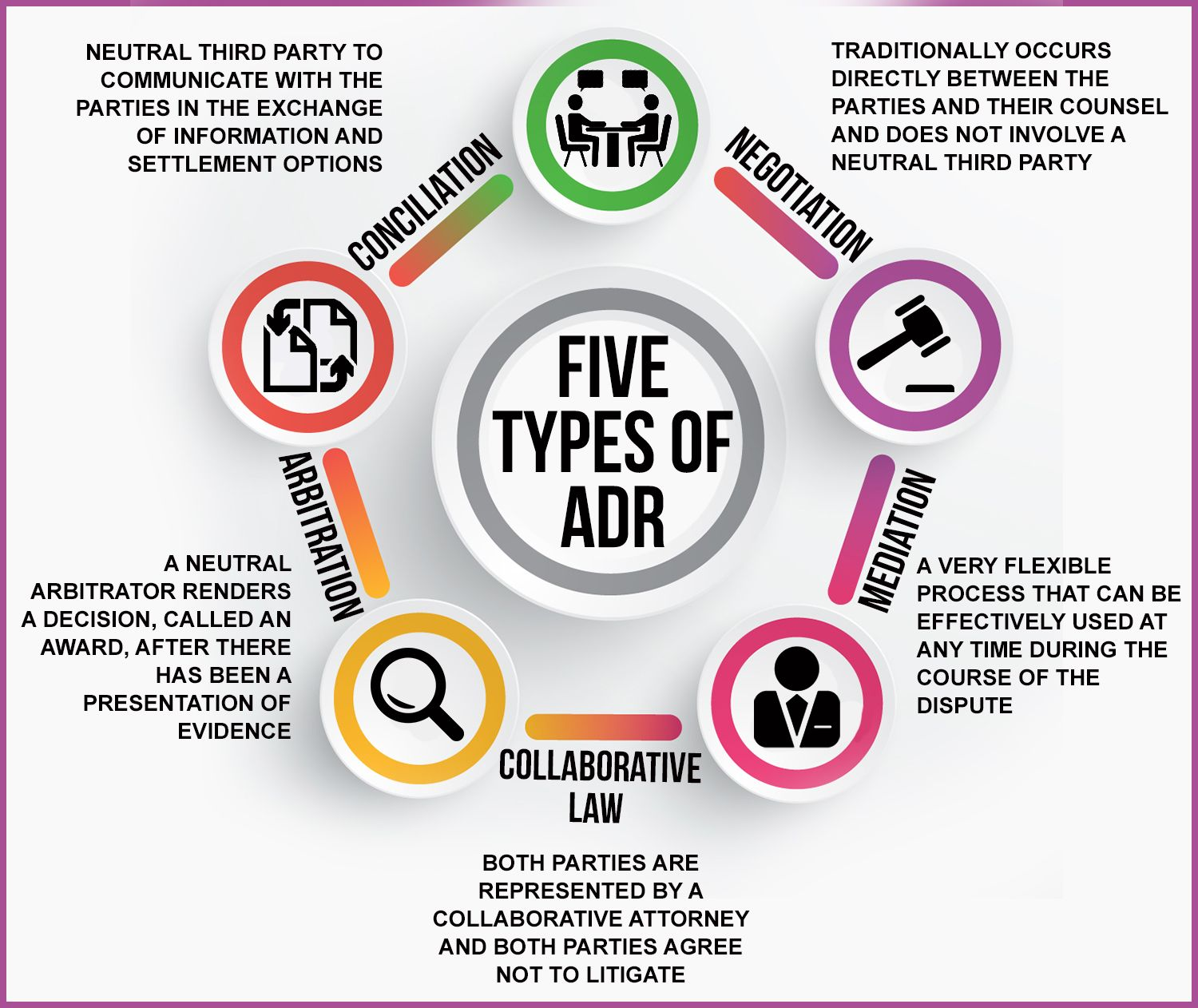Infographics
Social Justice
SC Allows for Sub-Classification of SCs and STs
For Prelims: Supreme Court of India, Scheduled Castes, Scheduled Tribes, Article 14, E.V. Chinnaiah v State of Andhra Pradesh case, 2004
For Mains: Legal Tussle over Sub categorisation of Scheduled Castes, Benefits and Challenges Related to Sub-categorisation.
Why in News?
The Supreme Court of India in review judgement of Punjab and Haryana High Court, delivered a landmark verdict allowing states the authority to sub-classify reserved category groups, such as Scheduled Castes (SCs) and Scheduled Tribes (STs), for the purpose of reservations.
- This 6-1 majority decision overturns the 2004 ruling in E.V. Chinnaiah vs. State of Andhra Pradesh, fundamentally altering the landscape of reservation policies in India.
What was the SC’s Verdict on Sub-Classifications of SCs and STs?
- Sub-Classifications Permitted: The Court ruled that states are constitutionally allowed to sub-classify SCs and STs based on varying levels of backwardness.
- The seven-judge Bench ruled that states can now sub-classify SCs within the 15% reservation quota to provide better support for the most disadvantaged groups.
- Chief Justice of India emphasised the difference between "sub-classification" and "sub-categorisation," cautioning against using these classifications for political appeasement rather than genuine upliftment.
- The Court noted that sub-classification should be based on empirical data and historical evidence of systemic discrimination, rather than arbitrary or political reasons.
- States must base their sub-classification on empirical evidence to ensure fairness and effectiveness.
- The Court clarified that 100% reservation for any sub-class is not permissible. State decisions on sub-classification are subject to judicial review to prevent political misuse.
- The Supreme Court has ruled that the 'creamy layer' principle, previously applied only to Other Backward Classes (OBCs) (as highlighted in Indra Sawhney Case), should now also be applied to SCs and STs.
- This means states must identify and exclude the creamy layer within SCs and STs from reservation benefits. The judgement responds to the need for a more nuanced approach to reservations, ensuring that benefits reach those who are truly disadvantaged.
- The court stated that Reservation has to be limited only to the first generation.
- If any generation in the family has taken advantage of the reservation and achieved a higher status, the benefit of reservation would not be logically available to the second generation.
- Rationale for the Verdict: The Court acknowledged that systemic discrimination prevents some members of SCs and STs from advancing, and therefore, sub-classification under Article 14 of the Constitution can help address these disparities.
- This approach allows states to tailor reservation policies to more effectively support the most disadvantaged within these groups.
What led to the Reference of the Sub-Classification Issue?
- The issue of sub-classification of Scheduled Castes (SCs) and its referral to a seven-judge bench was initiated by a five-judge bench in the case of State of Punjab v. Davinder Singh , 2020.
-
The primary factors leading to this reference were:
-
Reconsideration of EV Chinniah Judgment: The five-judge bench found it necessary to reconsider the judgement in EV Chinniah v. State of Andhra Pradesh, 2004.
-
The EV Chinniah ruling stated that sub-classification within SCs was not permissible, as SCs formed a homogeneous group.
-
- Punjab Scheduled Caste and Backward Classes (Reservation in Services) Act, 2006: The specific legal challenge in this case involved the validity of Section 4(5) of the Punjab Scheduled Caste and Backward Classes Act, 2006.
- This provision mandated that 50% of vacancies reserved for SCs in direct recruitment be offered to Balmikis and Mazhabi Sikhs, contingent on their availability.
- High Court Ruling: A division bench of the Punjab and Haryana High Court, in 2010, struck down this provision, relying on the EV Chinniah judgment.
- The High Court ruled that all castes in the Presidential Order under Article 341(1) formed one homogeneous group and could not be subdivided further.
- The EV Chinniah judgement had established that Article 341 of the Constitution, which empowers the President to identify and notify SCs, was the basis for reservations.
- According to Article 341, SCs can only be identified and categorised by the President in consultation with the Governor and through public notification.
-
What are the Arguments For and Against Sub-Classification?
- Arguments For Sub-Classification:
- Enhanced Flexibility: Sub-classification allows both central and state governments to design policies that better address the needs of the most disadvantaged within SC/ST communities.
- Alignment with Social Justice: Supporters argue that sub-classification helps achieve the constitutional goal of social justice by providing targeted benefits to those who need them the most.
- Constitutional Provisions: Article 16(4) of the Constitution, this provision permits reservations for backward classes who are inadequately represented in state services.
- Article 15(4) empowers the state to create special arrangements for promoting the interests and welfare of socially and educationally backward classes of the society such as SC and STs.
- Article 342A supports the flexibility of states in maintaining their lists of socially and economically backward classes.
- Arguments Against Sub-Classification:
- Homogeneity of SCs and STs: Critics argue that sub-classification could undermine the uniform status of SCs and STs, which are recognised as a homogeneous group by the Presidential list.
- Potential for Inequality: There are concerns that sub-classification could lead to further division and potentially exacerbate inequalities within the SC community.
What is the Significance of the Supreme Court Verdict?
- Overruling Previous Judgement: The Supreme Court’s decision reverses the E.V. Chinnaiah ruling, which had previously held that SCs and STs were a homogeneous group and thus could not be subdivided for reservation purposes by the states and unconstitutional under Article 341 of the Indian Constitution.
- The Chief Justice of India stated that the new ruling on sub-classifying Scheduled Castes and Scheduled Tribes does not violate Articles 14 or 341 of the Constitution.
- Impact on State Laws: The ruling upholds various state laws that had previously been struck down, such as those in Punjab and Tamil Nadu, allowing states to create sub-categories within SC and ST groups.
- The Punjab government’s 1975 notification, which divided its SC reservation into categories for Valmikis and Mazhabi Sikhs, was initially upheld but later challenged following the E.V. Chinnaiah judgment.
- Future of Reservations: States will now have the authority to implement sub-classification policies, which could lead to more nuanced and effective reservation strategies.
-
The decision sets a new precedent for how reservations can be administered, potentially influencing similar cases and policies across the country.
-
What are the Challenges for Sub-Classification?
- Data Collection and Evidence: Gathering accurate and comprehensive data on the socio-economic conditions of different sub-groups within SCs and STs is essential.
- States must rely on empirical evidence to justify their sub-classification decisions. Ensuring data accuracy and avoiding biases can be challenging.
- Balancing Interests: Sub-classification aims to uplift the most disadvantaged sub-groups, but balancing competing interests can be complex.
- Uniformity vs. Diversity: While sub-classification allows tailoring policies, it may lead to variations across states. Striking a balance between uniformity and addressing local needs is a challenge.
- Ensuring that sub-categories do not undermine the overall goals of reservation policies is crucial.
- Political Resistance: Sub-classification policies can face opposition from political groups that either support or oppose changes to reservation systems, leading to potential delays and conflicts.
- Social Tensions: Sub-classification might exacerbate existing social tensions within SC/ST communities, leading to intra-community conflicts and divisions.
- Administrative Burden: The process of creating, managing, and updating sub-categories adds a significant administrative burden on government agencies, necessitating additional resources and manpower.
Way Forward
- States need to consider historical discrimination, economic disparities, and social factors. Avoiding political motivations and ensuring fairness are critical.
- Leverage the upcoming Census to gather comprehensive data on SCs and STs, including sub-group specific information.
- Establish independent data verification processes to maintain credibility and transparency.
- Define clear and objective criteria for sub-classification, avoiding subjective or politically motivated decisions. Prioritise socio-economic indicators over mere caste or tribal affiliations.
- Monitoring the impact and adjusting policies based on outcomes is essential. Ensuring that benefits reach the intended beneficiaries is a continuous process.
- Recognise sub-classification as a temporary measure to address historical disadvantages. Focus on overall socio-economic development and empowerment of SCs and STs.
- Gradually reduce reliance on reservations as broader social and economic conditions improve.
Read more: Intra-Group Caste Reservation in India
|
Drishti Mains Question: Q. Analyse the significance of the Supreme Court's ruling allowing sub-classification of Scheduled Castes and Scheduled Tribes for reservations. What are the potential impacts on social justice in India? |
UPSC Civil Services Examination, Previous Year Question:
Prelims
Q. Consider the following organizations/bodies in India: (2023)
- The National Commission for Backward Classes
- The National Human Rights Commission
- The National Law Commission
- The National Consumer Disputes Redressal Commission
How many of the above constitutional bodies?
(a) Only one
(b) Only two
(c) Only three
(d) All four
Ans: (a)
Mains:
Q. What are the two major legal initiatives by the State since Independence addressing discrimination against Scheduled Tribes (STs). (2017)
Disaster Management
Landslides in Wayanad
For Prelims: Landslide and its types, National Landslide Risk Management Strategy, Landslide Risk Mitigation Scheme (LRMS), Flood Risk Mitigation Scheme (FRMS), National Guidelines on Landslides and Snow Avalanches, Landslide Atlas of India, Geological Survey of India
For Mains: Landslides: their causes, difference between landslides in himalayas and Western Ghats, Potential measures to mitigate and major initiatives already taken.
Why in News?
Recently, the Wayanad district of Kerala has witnessed one of the most devastating landslide-related disasters due to extreme rainfall and fragile ecological conditions.
- The district received over 140 mm of rain in 24 hours, surpassing expectations and recalling the devastating 2018 floods that claimed around 500 lives.
Note:
- The central government has planned to introduce the Disaster Management (Amendment) Bill, 2024 in the 18th Lok Sabha.
- The Bill seeks to create a disaster database at national and State level and makes provision for the constitution of Urban Disaster Management Authority for State capitals and large cities having Municipal Corporations.
- The database will include disaster assessment, fund allocation details, expenditure, preparedness and mitigation plan, risk register according to type and severity of risk and such other relevant matters.
What are Landslides?
- About:
-
A landslide is the downward movement of rock, soil, and debris on a slope, ranging from small shifts to large, destructive events.
-
It can occur on natural or man-made slopes and is triggered by factors like heavy rainfall, earthquakes, volcanic activity, human activities, and changes in groundwater levels.
-
-
Types:
- Slides: Movement along a rupture surface, including rotational and translational slides.
- Flows: Soil or rock mixed with water moving like a fluid, such as earth flows, debris flows, mudflows, and creep.
- Spreads: Lateral extension and cracking of the mass, often due to liquefaction.
- Topples: Forward rotation and free-fall from a vertical or near-vertical slope.
- Falls: Detachment from a steep slope or cliff, descending by free-fall, bouncing, or rolling.
- The Landslide Atlas of India by ISRO:
- India is among the top 5 landslide-prone countries globally.
- Others are China, US, Italy and Switzerland.
- In India, about 0.42 million sq. km (12.6% of land area) is prone to landslide hazard.
- Reported landslides in India are distributed as follows:
- 66.5% in the Northwestern Himalayas
- 18.8% in the Northeastern Himalayas
- 14.7% in the Western Ghats
- As per the Geological Survey of India, the economic loss due to landslides may amount to as much as 1% to 2% of the Gross National Product (GNP) in many developing countries
- India is among the top 5 landslide-prone countries globally.
- Major Landslide-Prone Areas in India:
- The Northeastern Region (comprising about 50% of the total landslide-prone areas)
- Uttarakhand, Himachal Pradesh, and Jammu & Kashmir along the Himalayas.
- Maharashtra, Goa, Karnataka, Kerala, and Tamil Nadu along the Western Ghats
- The Araku region in Andhra Pradesh along the Eastern Ghats.
- Nearly 17,000 sq km of area in Kerala, mostly on the western side of the Western Ghats, is mapped as landslide-prone.
Major Landslides in India
- Kedarnath, Uttarakhand in 2013
- Pettimudi, Kerala in 2020
- Mumbai, Maharashtra in 2021
- Tupal, Manipur in 2022
- Raigarh, Maharashtra in 2023
- Aizawl, Mizoram in 2024
- Shirur, Karnataka in 2024
What are the Causes of Landslides?
- Gravitational Forces: These are the primary cause of landslides, constantly pulling materials on slopes downward.
- When gravity exceeds the shear strength of geomaterials like rocks, sand, silt, and clay, the slope fails, resulting in the downhill movement of these materials.
- Natural Triggers:
- Rainfall: Prolonged or intense rainfall increases soil water content, reducing cohesion and adding weight to slopes, making them more prone to failure.
- The terrain in Wayanad has two distinctive layers: a soil layer atop hard rocks. Heavy rainfall saturates the soil with moisture, weakening the force binding the soil to the rocks, triggering landslides.
- Aslo, the recent warming of the Arabian Sea has led to deep cloud systems and extremely heavy rainfall in the Western Ghats, heightening landslide risks. Climate change has also shifted the rain-bearing belt, increasing convective rainfall in southern regions like Wayanad.
- Convectional rainfall occurs when heated air from the earth's surface rises upwards with water vapour, condensing at higher altitudes. The clouds carrying the water vapour are not carried away by wind, resulting in rainfall at the same place.
- Earthquakes: Earthquakes destabilise slopes by shaking the ground and weakening the structural integrity of geomaterials, especially in tectonically active regions like the Himalayas.
- Erosion: Natural processes such as river or wave action can erode the base of slopes, undermining their stability. Coastal areas are particularly susceptible to landslides due to wave-induced erosion.
- Rainfall: Prolonged or intense rainfall increases soil water content, reducing cohesion and adding weight to slopes, making them more prone to failure.
- Hydrological Factors: Groundwater movement can contribute to landslide risk. Water can seep through porous materials, increasing pore pressure and reducing effective stress, thereby weakening the slope.
- Anthropogenic Influences:
-
Deforestation: This has removed vegetation, destabilising slopes by eliminating tree roots that provide natural reinforcement and water drainage.
- Construction and Land Use Changes: Activities such as mining, road construction, and urban development have disrupted natural drainage and load distribution, increasing landslide risks.
- Also, historical deforestation for agriculture and tea plantations by Britishers has weakened soil stability, making the region (western ghats) more prone to landslides during heavy rains.
- Infrastructure Development: Tourism and infrastructure development, including resorts, artificial lakes, and construction activities, have intensified land pressure and disrupted natural drainage, increasing landslide risks.
-
- Geological Factors: Geological factors, such as the composition, structure, and weathering state of materials, significantly affect slope stability.
- The Western Ghats have a fragile ecology with steep slopes and dual-layered terrain, making them prone to landslides when rainwater saturates the soil, increasing its weight and reducing stability.
- Defunct Quarries: The presence of quarries in the vicinity, even after they have ceased operations have also contributed to soil destabilisation as the vibrations and shockwaves from these activities could weaken the geological structure, making the area more prone to landslides during heavy rains.
How do Landslides in the Western Ghats Differ from Those in the Himalayan Region?
| Region | Causes |
| Western Ghats |
|
| Himalayas |
|
What are the Challenges Associated with Landslides?
- Loss of Life and Injury: Landslides can result in fatalities and serious injuries to individuals in affected areas. The sudden nature of landslides often leaves little time for evacuation.
- Displacement of Communities: Landslides can lead to the displacement of populations, forcing communities to relocate. This can disrupt social structures and lead to long-term socio-economic challenges.
- Damage to Infrastructure: Critical infrastructure such as roads, bridges, and buildings can be severely damaged or destroyed, leading to significant economic losses and hampering rescue and relief operations.
- Economic Impact: The cost of repairing damaged infrastructure and providing humanitarian aid can be substantial. Additionally, landslides can disrupt local economies, particularly in areas reliant on agriculture and tourism.
- Environmental Degradation: Landslides can lead to soil erosion, loss of vegetation, and habitat destruction, adversely affecting biodiversity and ecosystem services.
Why is Predicting Landslides Difficult?
- Complexity of Geomaterials: The subsurface consists of various rocks and particulate materials with differing strengths, making it difficult to assess stability accurately.
- Insufficient Data: Detailed three-dimensional mapping of geomaterials is required, but current technology often relies on limited data from select locations, leading to uncertainty.
- Identifying Weak Points: Critical weak points, such as fractures in rock masses, can be easily overlooked, contributing to prediction inaccuracies.
- Estimating Size and Runout: Determining the exact size of a potential landslide and its runout distance is challenging, complicating risk assessments.
- Timing Predictions: Forecasting when landslides will occur is difficult, akin to predicting weather or seismic activity, which involves inherent uncertainties.
- Environmental Variability: Changes in rainfall patterns, seismic activity, and human activities can all influence slope stability, adding further complexity to predictions.
- Technological Limitations: Current sensors and models may not provide the necessary precision for accurate predictions, especially in remote or inaccessible areas.
What are the Government Initiatives to Mitigate Landslide Risks in India?
- National Landslide Risk Management Strategy (2019): It is a comprehensive strategy addressing hazard mapping, monitoring, early warning systems, awareness programs, capacity building, policies, and stabilisation measures.
- Landslide Risk Mitigation Scheme (LRMS): This scheme under preparation, aims to provide financial support for tailored landslide mitigation projects in vulnerable states, focusing on disaster prevention, mitigation strategies, and research and development for monitoring critical landslides.
- This initiative will contribute to the establishment of an Early Warning System (EWS) and enhance capacity-building efforts.
- Flood Risk Mitigation Scheme (FRMS): A forthcoming scheme for developing flood shelters, river basin-specific early warning systems, and digital elevation maps for flood preparedness and evacuation.
- National Guidelines on Landslides and Snow Avalanches: Guidelines by National Disaster Management Authority (NDMA) covering hazard assessment, risk management, structural and non-structural measures, institutional mechanisms, financial arrangements, and community participation.
- Landslide Atlas of India: It is a detailed resource that documents landslide events in the country's vulnerable areas and includes damage assessments for certain sites. Developed by the National Remote Sensing Centre (NRSC) under Indian Space Research Organisation (ISRO), it offers important information and insights related to landslides in India.
What are the Recommendations of Various Committees on Western Ghats?
- Western Ghats Ecology Expert Panel, 2011 (Headed by Madhav Gadgil):
- All of the Western Ghats be declared as Ecologically Sensitive Areas (ESA)
- with only limited development allowed in graded zones.
- Classify the Western Ghats into ESA 1, 2 and 3 with ESA-1 having a high priority where almost all developmental activities are restricted.
- Specified the system of governance to be a bottom-to-top approach (right from Gram sabhas) rather than a top-to-bottom approach.
- Western Ghats Ecology Authority (WGEA) to be constituted as a statutory authority under the Ministry of Environment, Forest and Climate Change, with the powers under Section 3 of the Environment (Protection) Act, 1986.
- The report was criticised for being more environment-friendly and not in tune with the ground realities.
- Kasturirangan Committee, 2013: It sought to balance the development and environmental protection in contrast to the Gadgil report:
- Instead of the total area of Western Ghats, only 37% of the total area to be brought under ESA.
- Complete ban on mining, quarrying and sand mining in ESAs.
- No thermal power projects to be allowed and hydropower projects be allowed only after detailed study.
- Red industries i.e. which are highly polluting to be strictly banned.
- Exclusion of inhabited regions and plantations from the purview of ESAs making it a pro-farmer approach.
What Measures can be Taken to Prevent Landslides Hazards?
- Building Resilience: This involves setting up a network of sensors for real-time monitoring and data collection.
- Assessment of rainfall thresholds for soil saturation in different areas.
- Mapping out the routes that landslides are likely to take after being triggered.
- Creating route maps to mark areas that should be out of bounds for settlements or activities.
- Harnessing Technology for Vigilant Monitoring: Utilise web-based sensors like rain gauges, piezometers, inclinometers, extensometers, InSAR (Interferometric Synthetic Aperture Radar), and total stations to monitor vulnerable areas, focusing on densely populated and urbanised zones.
- Integrated EWS: Develop a comprehensive EWS using Artificial Intelligence (AI) and Machine Learning (ML) algorithms to predict and alert communities about impending hazards, providing valuable time for precautionary measures.
- Sustainable Socio-Economic Progress: Recognise the region's valuable natural resources, such as glaciers, springs, minerals, energy sources, and medicinal plants, for sustainable socio-economic development. Balance resource utilisation with ecological conservation for long-term viability.
- Environmental Considerations: There is a need to safeguard ecosystems through sustainable practices and responsible resource use.
- Implement thoughtful urban planning in mountainous areas, restricting extensive construction and managing drainage and slope excavation scientifically.
- Use retaining walls to support soil and restore ecological balance through reforestation and soil conservation efforts.
- Building Codes and Evaluation: There is a need to map towns and assess load-bearing capacities to develop robust building codes for safe construction in hazard-prone areas. Enforce strict land use restrictions in these areas to prevent activities that could destabilise the soil.
Soil Nailing and Hydroseeding for Landslide Prevention
- The State highways department in Kerala is tackling landslide issues in the Nilgiris with soil nailing and hydroseeding.
- Soil nailing reinforces soil, while hydroseeding promotes plant growth with a mix of seeds, fertiliser, and water.
- This approach includes planting five grass species and maintaining the vegetation to reduce the environmental impact of road infrastructure.
Conclusion
The Wayanad landslides serve as a stark reminder of the interplay between natural disasters and human activities. A multifaceted approach involving regulation, education, and scientific research is essential to mitigate the risks and protect vulnerable communities in the future.
|
Drishti Mains Question: Q. What are the causes of frequent landslides in Western Ghats? What are the mitigation strategies that could be adopted? |
UPSC Civil Services Examination, Previous Year Questions (PYQs)
Mains:
Q. Differentiate the causes of landslides in the Himalayan region and Western Ghats. (2021)
Q. The Himalayas are highly prone to landslides.” Discuss the causes and suggest suitable measures of mitigation. (2016)
Biodiversity & Environment
The State of the World's Mangroves 2024
For Prelims: The State of the World's Mangroves 2024, Global Mangrove Alliance, World Mangrove Day, Global Mangrove Watch, Aquaculture, Sea-level rise, IUCN Red List, Ecosystem services, Carbon storage, Ecotourism, Kunming-Montreal Global Biodiversity Framework
For Mains: Challenges to Mangroves, Status of Mangroves
Why in News?
Recently, a report titled "The State of the World's Mangroves 2024" was released by the Global Mangrove Alliance (GMA) on World Mangrove Day (26 July).
- The GMA is the preeminent alliance of 100-plus members driving the conservation and restoration for the world’s mangroves.
What are the Key Benefits of the Mangroves as Per the State of the World's Mangroves 2024 Report?
- About:
- The latest world map (GMW v4.0), developed by the Global Mangrove Watch, provides a sixfold improvement in spatial resolution.
- It maps 147,256 km² of mangroves in 2020, adding data for six new territories.
- Southeast Asia holds about one-third of the world's mangroves, with Indonesia alone accounting for 21%.
- The latest world map (GMW v4.0), developed by the Global Mangrove Watch, provides a sixfold improvement in spatial resolution.
- Key Benefits of Mangroves:
-
Carbon Storage: Mangroves hold, on average, a remarkable 394 tonnes of carbon per hectare in their living biomass and in the top meter of soil.
-
Some mangrove areas, like in the Philippines, the average values are over 650 tonnes of carbon per hectare.
-
-
Biodiversity: Mangroves are home to a tremendous diversity of species, reflecting their ecotone nature.
-
Over 5,700 plant and animal species, across 21 phyla, have been recorded in Indian mangroves alone.
-
-
Flood Reduction: Flooding is the most frequently occurring natural disaster worldwide and is exacerbated by climate change.
-
Mangroves reduce flood depths by 15-20%, and over 70% in some areas.
-
- Food Security: Mangroves support nearly 800 billion young fish, prawns, bivalves, and crabs annually, crucial for global fisheries.
- Cultural Significance: Mangrove species are widely used in traditional medicine, providing health benefits to local populations.
-
What are the Key Highlights in the Report Regarding India?
- Mangrove Cover in India: In India West Bengal holds the largest mangrove area followed by Gujarat, majorly located in the Gulf of Kutch and Gulf of Khambhat.
-
Biodiversity in the Mangrove Ecosystems of India: Mangrove ecosystems of India have perhaps the highest record of biodiversity of any country, with a total of 5,746 species. Of these, 4,822 species (84%) are animals.
-
Critically Endangered and Vulnerable Mangroves: Natural mangrove forests on the southern Indian coast are critically endangered, particularly in the Lakshadweep archipelago and Tamil Nadu, due to rising sea levels from global warming.
-
The report identifies shrimp aquaculture as a major driver of mangrove loss, highlighting its expansion in states like Andhra Pradesh, West Bengal, and Gujarat.
- Mangroves on the western coast, extending from Gujarat to Kerala, are vulnerable to collapse due to human activities like shrimp aquaculture and natural threats such as tropical storms.
- Conservation challenges in the Gulf of Cambay (Khambhat) include severe grazing and lopping during the flowering season, which hinders natural regeneration and damages the mangrove stock.
-
-
Government Initiatives: The Union government has launched the Mangrove Initiative for Shoreline Habitats & Tangible Incomes (MISHTI) programme to augment mangrove cover by planting mangroves in 540 sq km across 11 states and two Union territories.
- Corporate involvement includes six major corporations signing MoUs with the Gujarat forest department to plant mangroves in 30 sq km.
What are the Challenges Highlighted in the Report?
- Conversion to aquaculture (26%), oil palm plantations and rice cultivation together explain 43% of mangrove losses between 2000 and 2020.
- The expansion of oil palm plantations and rice cultivation significantly contributes to the destruction of mangrove forests.
- Logging for timber and charcoal production leads to significant mangrove degradation.
- Natural retraction, influenced by climate change, sediment shifts, and sea-level rise, also impacted 26% of mangrove areas.
- Increasing sea levels threaten mangrove habitats, especially those with limited freshwater and sediment input.
- More frequent and intense cyclonic storms cause significant damage to mangrove ecosystems.
- Regional breakdowns highlight very diverse patterns of change, with human impacts dominating change in Africa, Asia, and North and Central America.
- Despite efforts, only 40% of the world's remaining mangrove forests are in protected areas. Some countries, like Malaysia and Myanmar, have less than 5% protection.
- The IUCN Red List identifies that half of the world’s mangrove provinces are threatened, with climate change being a significant exacerbating factor.
- Pollution from oil spills (8.2%), particularly in regions like the Niger Delta, poses severe risks to mangrove health and regeneration.
- Securing adequate financing for mangrove conservation remains a challenge.
What are the Steps Suggested in the Report for the Protection of Mangroves?
- Six Guiding Principles for Successful Mangrove Restoration:
- Principle 1: Safeguard nature and maximise biodiversity.
- Protect the remaining intact mangrove ecosystems, enhance their resilience, and implement science-based ecological restoration protocols.
- Policy frameworks like the Kunming-Montreal Global Biodiversity Framework are crucial in driving international conservation efforts
- Protect the remaining intact mangrove ecosystems, enhance their resilience, and implement science-based ecological restoration protocols.
- Principle 2: Employ the best information and practices.
- Use the best available science-based knowledge, including Indigenous, traditional, and local knowledge, for mangrove interventions.
- Case studies from regions like the Philippines, Colombia, and Kenya highlight successful community-led restoration projects.
- Use the best available science-based knowledge, including Indigenous, traditional, and local knowledge, for mangrove interventions.
- Principle 3: Empower people and address their needs.
- Implement, in all aspects of project design, social safeguards that operate locally and contextually to protect and enhance community member rights, knowledge, and leadership to achieve fair and equitable benefit sharing.
- Principle 4: Align to the broader context – operate locally and contextually.
- Operate in the local context, including cultural customs, resource use, management, and ownership regimes, while taking a land and seascape approach and aligning to international trends and their local implications.
- Principle 5: Design for sustainability.
- Create sustainable mangrove projects and programs that are inclusive of how these initiatives will last into the future, including considerations for financing, threat abatement, community stewardship, and climate change.
- Principle 6: Mobilize High-integrity capital.
- Ensure capital flows at the scale needed and allow funding to be distributed to ready-to-scale projects.
- Innovative financial tools, including carbon credits and mangrove insurance, are essential for supporting conservation actions.
- Ensure capital flows at the scale needed and allow funding to be distributed to ready-to-scale projects.
- Principle 1: Safeguard nature and maximise biodiversity.
- Expand Protected Areas: The Global Mangrove Alliance aims to halt mangrove loss, restore half of the world's lost mangroves, and double protection by 2030.
- Increase the percentage of mangrove areas under legal protection. The Global Mangrove Alliance aims to double the protection to 80% by 2030.
- Other Effective Area-Based Conservation Measures (OECMs): Implement OECMs that integrate biodiversity into sectors like food and water security, even if conservation is not the primary objective.
|
Drishti Mains Question: Q. Discuss the current state of mangrove forests in India. What are the major challenges faced by these ecosystems, and what measures can be taken to address them? |
UPSC Civil Services Examination, Previous Year Question (PYQ)
Prelims:
Q. “Leaf litter decomposes faster than in any other biome and as a result the soil surface is often almost bare. Apart from trees, the vegetation is largely composed of plant forms that reach up into the canopy vicariously, by climbing the trees or growing as epiphytes, rooted on the upper branches of trees.” This is the most likely description of (2021)
(a) coniferous forest
(b) dry deciduous forest
(c) mangrove forest
(d) tropical rainforest
Ans: (d)
Q. Which one of the following regions of India has a combination of mangrove forest, evergreen forest and deciduous forest? (2015)
(a) North Coastal Andhra Pradesh
(b) South-West Bengal
(c) Southern Saurashtra
(d) Andaman and Nicobar Islands
Ans: (d)
Q. Two important rivers – one with its source in Jharkhand (and known by a different name in Odisha), and another, with its source in Odisha – merge at a place only a short distance from the coast of Bay of Bengal before flowing into the sea. This is an important site of wildlife and biodiversity and a protected area. Which one of the following could be this? (2011)
(a) Bhitarkanika
(b) Chandipur-on-sea
(c) Gopalpur-on-sea
(d) Simlipal
Ans: (a)
Q. Recently, which one of the following was included in the UNESCO’s World Heritage list? (2009)
(a) Dilwara Temple
(b) Kalka-Shimla Railway
(c) Bhiterkanika Mangrove Area
(d) Visakhapatnam to Araku valley railway line
Ans: (b)
Mains:
Q. Discuss the causes of depletion of mangroves and explain their importance in maintaining coastal ecology. (2019)
Q. What is wetland? Explain the Ramsar concept of ‘wise use’ in the context of wetland conservation. Cite two examples of Ramsar sites from India. (2018)
Science & Technology
Genetic Testing in Sports
Prelims: Genetic Testing, Methods, Genetic Information and Privacy, DNA Test.
Mains: Genetic Testing Needs, Concerns, Advantages, Disadvantages, Research and Development.
Why in News?
The emergence of genetic testing in sports has gained significant attention, especially with athletes utilising it for performance enhancement ahead of the 2024 Paris Olympics.
- This trend has sparked debates about the potential benefits and ethical concerns surrounding athletic genetic screening.
What is Genetic Testing?
- About:
- Genetic testing involves analysing an individual's DNA to identify genetic variants that can influence health, traits, and performance.
- It detects alterations in chromosomes, genes, or proteins to confirm or exclude genetic conditions and assess the likelihood of developing or transmitting genetic disorders.
- These tests can be conducted using samples from blood, hair, skin, amniotic fluid, or other tissues.
- Types:
- Cytogenetic Testing: Examines whole chromosomes.
- Biochemical Testing: Measures proteins produced by genes.
- Molecular Testing: It detects small DNA mutations.
- Applications:
- Newborn Screening and Diagnostic Testing: Genetic testing can be conducted just after birth to identify treatable genetic disorders. It can be used to confirm or rule out specific genetic conditions based on physical signs and symptoms.
- Carrier Testing: It identifies individuals carrying one copy of a gene mutation that could cause a genetic disorder if present in two copies. Useful for those with a family history of genetic disorders or belonging to certain high-risk ethnic groups.
- Preimplantation Testing (PGD): It can be used in conjunction with in-vitro fertilisation to test embryos for genetic changes before implantation, reducing the risk of genetic disorders.
- Forensic Testing: It utilises DNA sequences for legal purposes, such as identifying crime victims, suspects, or establishing biological relationships.
What are Genes, DNA and Chromosomes?
- DNA:
- DNA is a long molecule that contains our unique genetic code. DNA is composed of 2 strands that wrap around each other to form a double helix shape, like a spiral staircase.
- Each strand of DNA is formed of 4 basic building blocks or ‘bases’: adenine (A), cytosine (C), guanine (G), and thymine (T).
- Gene:
- Genes are sections of DNA that contain the set of instructions to produce one specific molecule in the body, usually a protein.
- These proteins control how the body grows and works and are responsible for characteristics like eye colour, blood type, or height.
- Each cell contains 2 sets of genes, one from your mother and one from your father. For ease of storage and access, the genes are packaged up into 46 parcels called chromosomes.
- Genes are sections of DNA that contain the set of instructions to produce one specific molecule in the body, usually a protein.
- Chromosome:
- In the nucleus of each cell, the DNA molecule is packaged into thread-like structures called chromosomes.
- Each chromosome is made up of DNA tightly coiled many times around proteins called histones that support its structure.
- Chromosomes are not visible in the cell's nucleus, even under a microscope.
How is Genetic Testing Used to Improve Athlete's Performance?
- Identification of Genetic Markers: Genetic testing can reveal specific markers associated with physical traits that contribute to athletic performance.
- For example, variations in genes like ACE (angiotensin-converting enzyme) and ACTN3 (alpha-actinin 3) have been linked to endurance and strength capabilities, respectively.
- Assessment of Muscle Fiber Composition: The ACTN3 genes influence the proportion of fast-twitch muscle fibres, which are crucial for explosive strength and sprinting.
- Athletes with certain variants of this gene may be predisposed to excel in power sports, while others may have a genetic makeup favouring endurance activities.
- Evaluation of Recovery and Injury Risk: Genetic testing can identify predispositions to injuries or recovery times.
- For instance, variations in genes related to collagen production can indicate susceptibility to tendon and ligament injuries, allowing for tailored training and preventive strategies.
- Nutritional Needs and Metabolism: Genetic insights can help determine how well an athlete metabolises nutrients.
- For example, identifying lactose intolerance or variations in vitamin D metabolism can guide dietary choices that optimise performance and overall health.
- Psychological Traits: Certain genetic variants may influence psychological traits such as motivation, stress response, and pain tolerance, which are critical for competitive success.
- Understanding these traits can help in mental conditioning and preparation.
- Tailored Training Programs: By understanding an athlete's genetic predispositions, coaches can design training regimens that align with their strengths and weaknesses, enhancing performance potential.
What are the Limitations of Genetic Testing?
- Scientific Uncertainty: The relationship between genetics and athletic performance is complex and not fully understood.
- Many studies yield conflicting results, making it difficult to draw definitive conclusions.
- Small Sample Sizes: Many genetic studies involve limited sample sizes, which can affect the reliability and generalisability of findings across different populations and sports.
- Overemphasis on Genetics: Focusing too much on genetic factors can overshadow the importance of training, practice, nutrition, and psychological aspects, which are crucial for athletic success.
- Ethical Concerns: Issues related to privacy, potential discrimination, and misuse of genetic information pose significant ethical challenges for athletes.
- Misinterpretation of Data: Genetic data can be complex and may be misinterpreted without expert guidance, leading to incorrect conclusions about an athlete's potential.
- Commercial Exploitation: The rise of direct-to-consumer genetic testing often prioritises profit over scientific validity, raising concerns about the accuracy of results and the motivations behind testing.
Way Forward
- Independent Research: Encourage comprehensive studies by independent scientific bodies to validate findings on genetic influences and understand gene interactions better.
- Education and Training: Provide training for coaches and nutritionists to accurately interpret genetic data and apply it effectively in athlete development.
- Ethical Guidelines: Develop clear ethical guidelines to protect athletes’ privacy and prevent discrimination based on genetic information, ensuring responsible use of data.
- Holistic Approach: Emphasise a balanced approach that integrates genetic insights with traditional training, nutrition, and psychological support, recognising the interplay of genetics and environment.
- Collaboration with Regulatory Bodies: Work with sports organisations to create policies governing the use of genetic testing, ensuring fairness and standardisation in practices.
- Public Awareness Campaigns: Conduct campaigns to educate athletes and the public about the benefits and limitations of genetic testing, promoting informed decision-making.
Conclusion
While genetic testing can provide valuable insights into athletic potential, it is crucial to combine these findings with environmental factors, training, and personal dedication to fully realize an athlete's capabilities.
UPSC Civil Services Examination, Previous Year Questions (PYQs)
Q. What is Cas9 protein that is often mentioned in the news? (2019)
(a) A molecular scissors used in targeted gene editing
(b) A biosensor used in the accurate detection of pathogens in patients
(c) A gene that makes plants pest-resistant
(d) A herbicidal substance synthesized in genetically modified crops
Ans: (a)
Q. With reference to agriculture in India, how can the technique of ‘genome sequencing’, often seen in the news, be used in the immediate future? (2017)
- Genome sequencing can be used to identify genetic markers for disease resistance and drought tolerance in various crop plants.
- This technique helps in reducing the time required to develop new varieties of crop plants.
- It can be used to decipher the host-pathogen relationships in crops.
Select the correct answer using the code given below:
(a) 1 only
(b) 2 and 3 only
(c) 1 and 3 only,
(d) 1, 2 and 3
Ans: (d)
Mains
Q. What are the research and developmental achievements in applied biotechnology? How will these achievements help to uplift the poorer sections of society? (2021)
Important Facts For Prelims
Appointment of Governor
Why in News?
Recently, the President has appointed six new Governors and reshuffled three others.
What is the Appointment Process for the Governor?
- About:
- The governor is the chief executive head of the state.
- The office of the Governor is adapted from the Canadian model.
- As per Convention, he should not belong to the state where he is appointed so that he is free from local politics.
- Also, the president is required to consult the chief minister of the state concerned to ensure the smooth functioning of the constitutional machinery of the state.
- The governor is neither directly elected by the people nor indirectly elected by a specially constituted electoral college as is the case with the president.
- He is appointed by the president by warrant under his hand and seal.
- He holds office at the pleasure of the President and may be removed by the President at any time.
- In Surya Narain v Union of India Case, 1982, the Supreme Court held that the pleasure of the President is not justifiable.
- He is a nominee of the Central government.
- However, the Supreme Court in Hargovind Pant Vs. Raghukul Tilak Case held that the office of governor of a state is not an employment under the Central government.
- It is an independent constitutional office.
- Conditions of the Governor’s Office:
- He is entitled without payment of rent to the use of his official residence (the Raj Bhavan).
- He is entitled to such emoluments, allowances, and privileges as may be determined by Parliament.
- When the same person is appointed as the governor of two or more states, the emoluments and allowances payable to him are shared by the states in such proportion as determined by the president.
- His emoluments and allowances cannot be diminished during his term of office.
- Privileges:
- Under Article 361, he enjoys personal immunity from legal liability for his official acts.
- During his term of office, he is immune from any criminal proceedings, even in respect of his personal acts.
- He cannot be arrested or imprisoned.
- However, after giving two months’ notice, civil proceedings can be instituted against him during his term of office in respect of his personal acts.
- Oath:
- Before entering his office, the governor has to make and subscribe to an oath or affirmation.
- In his oath, the governor swears
- to faithfully execute the office
- to preserve, protect, and defend the Constitution and the law
- to devote himself to the service and well-being of the people of the state.
- The oath of office to the governor is administered by the chief justice of the concerned state high court and in his absence, the senior-most judge of that court available.
Constitutional Provisions Related to the Governor
- Article 153: There shall be a Governor for each state.
- A single person can be appointed as the Governor for two or more states (recommended by the Sarkaria Commission).
- The Governor is appointed by the President and is a nominee of the Central Government.
- Articles 157 and 158: Specify the eligibility requirements for the post of Governor.
- Article 163: There is a Council of Ministers with the Chief Minister at the head to aid and advise the Governor in the exercise of his functions, except in some conditions where discretion is allowed.
Read more: Governor, The Governor's Role: Challenges and Reform Proposals, Governors in the Limelight: Calls for Reform in India, Governor’s Role in State Legislature
UPSC Civil Services Examination, Previous Year Question (PYQ)
Prelims:
Q. Consider the following statements: (2018)
- No criminal proceedings shall be instituted against the Governor of a State in any court during his term of office.
- The emoluments and allowances of the Governor of a State shall not be diminished during his term of office.
Which of the statements given above is/are correct?
(a) 1 only
(b) 2 only
(c) Both 1 and 2
(d) Neither 1 nor 2
Ans: (c)
Q. Which of the following are the discretionary powers given to the Governor of a State? (2014)
- Sending a report to the President of India for imposing the President’s rule
- Appointing the Ministers
- Reserving certain bills passed by the State Legislature for consideration of the President of India
- Making the rules to conduct the business of the State Government
Select the correct answer using the code given below:
(a) 1 and 2 only
(b) 1 and 3 only
(c) 2, 3 and 4 only
(d) 1, 2, 3 and 4
Ans: (b)
Q. Which one of the following statements is correct? (2013)
(a) In India, the same person cannot be appointed as Governor for two or more States at the same time
(b) The Judges of the High Court of the States in India are appointed by the Governor of the State just as the Judges of the Supreme Court are appointed by the President
(c) No procedure has been laid down in the Constitution of India for the removal of a Governor from his/her post
(d) In the case of a Union Territory having a legislative setup, the Chief Minister is appointed by the Lt. Governor on the basis of majority support
Ans: (c)
Important Facts For Prelims
IPEF Elects India as Vice-Chair of Supply Chain Council
Why in News?
Recently, India has been elected as Vice-Chair of the Supply Chain Council which is one of the three bodies set up by the 14-member Indo-Pacific Economic Framework (IPEF) bloc.
What is the Supply Chain Council?
- About:
- India and 13 other Indo-Pacific Economic Framework (IPEF) partners have established three supply chain bodies under the landmark Indo-Pacific Economic Framework for Prosperity (IPEF) Agreement relating to Supply Chain Resilience.
- Supply Chain Council: To pursue targeted, action-oriented work to strengthen the supply chains for those sectors and goods most critical to national security, public health, and economic well-being.
- Crisis Response Network: To provide a forum for a collective emergency response to exigent or imminent disruptions.
- Labour Rights Advisory Board: Brings together workers, employers, and governments at the same table to strengthen labour rights and workforce development across regional supply chains.
- India and 13 other Indo-Pacific Economic Framework (IPEF) partners have established three supply chain bodies under the landmark Indo-Pacific Economic Framework for Prosperity (IPEF) Agreement relating to Supply Chain Resilience.
- Recent Appointments:
-
During the meetings, each of the three supply chain bodies elected a Chair and Vice Chair, who will serve for a term of two years. The elected chairs and vice chairs are:
-
Supply Chain Council: USA (Chair) and India (Vice Chair)
-
Crisis Response Network: Republic of Korea (Chair) and Japan (Vice Chair)
-
Labour Rights Advisory Board: USA (Chair) and Fiji (Vice Chair)
-
-
-
Significance:
- The inaugural virtual meetings of the Supply Chain Council (SCC), Crisis Response Network (CRN), and Labor Rights Advisory Board (LRAB) marked a major step forward for cooperation among partner countries for strengthening supply chain resilience in the region.
- The Supply Chain Council adopted Terms of Reference and discussed initial work priorities, to be further explored at its first in-person meeting to be held in Washington in September 2024 on the margins of the Supply Chain Summit.
- The Crisis Response Network discussed near and longer-term priorities, including conducting a tabletop exercise, and planned its first in-person meeting to be held alongside the Supply Chain Summit.
- The Labor Rights Advisory Board discussed priorities for strengthening labour rights across IPEF supply chains. The convening not only will advance the work of the Labor Rights Advisory Board but also focus on the labour provisions in the IPEF Clean Economy Agreement and Fair Economy Agreement.
What is IPEF?
- About:
- IPEF was launched in May 2022 at Tokyo, Japan, comprising 14 countries. The IPEF seeks to strengthen economic engagement and cooperation among partner countries with the goal of advancing growth, economic stability and prosperity in the region.
- The IPEF is built on 4 main pillars:
- Fair and Resilient Trade: Aims to promote economic growth, peace, and prosperity in the region.
- Supply Chain Resilience: Seeks to make supply chains more resilient, robust, and well-integrated.
-
Clean Economy (renewable energy and reduction of carbon emissions): Aims to advance cooperation on clean energy and climate-friendly technologies.
-
Fair Economy (tax and anti-corruption policies): Focuses on implementing effective anti-corruption and tax measures.
- India has joined Pillars II to IV of IPEF while it has an observer status in Pillar I.
UPSC Civil Services Examination, Previous Year Question (PYQ)
Prelims:
Q. Consider the following statements:
- Vietnam has been one of the fastest-growing economies in the world in the recent years.
- Vietnam is led by a multi-party political system.
- Vietnam’s economic growth is linked to its integration with global supply chains and focus on exports.
- For a long time Vietnam’s low labour costs and stable exchange rates have attracted global manufacturers.
- Vietnam has the most productive e-service sector in the Indo-Pacific region.
Which of the statements given above are correct?
(a) 2 and 4
(b) 3 and 5
(c) 1, 3 and 4
(d) 1 and 2
Ans: (c)
Q. With what purpose is the Government of India promoting the concept of “Mega Food Parks”? (2011)
- To provide good infrastructure facilities for the food processing industry.
- To increase the processing of perishable items and reduce wastage.
- To provide emerging and eco-friendly food processing technologies to entrepreneurs.
Select the correct answer using the codes given below:
(a) 1 only
(b) 1 and 2 only
(c) 2 and 3 only
(d) 1, 2 and 3
Ans: (b)
Rapid Fire
India-US Cultural Property Agreement
Recently, India and the US signed the first-ever Cultural Property Agreement (CPA) to combat the illegal trafficking of cultural artefacts and ensure the return of antiquarian objects to their place of origin.
- The agreement aligns with the Article 9 of the 1970 UNESCO Convention on the Means of Prohibiting and Preventing the Illicit Import, Export and Transfer of Ownership of Cultural Property.
- The CPA restricts the importation into the US of certain archaeological and ethnological material ranging from 1.7 million years ago through 1947. The list of such items restricted for import will be promulgated by the Government of the US.
- The US shall offer to return to India any object or material on the Designate List forfeited to the Government of the US.
- Similar agreements exist between the US and countries like Algeria, Cambodia, China, Egypt, and Italy.
- The agreement is the result of year-long bilateral discussions initiated during the G20 meetings. Under India’s G20 Presidency, the focus on protecting cultural property has been a top priority.
- The Kashi Culture Pathway and the New Delhi Leaders’ Declaration (NDLD) in 2023 underscored the commitment to fighting illicit trafficking.
- It marks a shift in the global development strategy, emphasising culture as a standalone goal in the post-2030 development framework.
Read More: G20 Culture Ministerial Meeting and B20 Summit 2023
Rapid Fire
SC Launches Special Lok Adalat Drive
The Supreme Court of India has launched a week-long special week-long Lok Adalat drive to address and resolve long-standing disputes as part of its 75th anniversary (diamond jubilee) celebrations.
- This initiative aims to tackle the substantial backlog of cases and provide expedited justice.
- The initiative involves the first seven Benches of the Supreme Court, with Chief Justice leading a five-member panel that includes prominent judges and legal professionals.
- Cases Covered: Includes matrimonial disputes, property disputes, motor accident claims, land acquisition, compensation, and service and labour issues.
- Citizens with pending cases are encouraged to participate for amicable and speedy resolutions.
- The drive employs an informal, technology-based solution to facilitate dispute resolution, making the process more accessible and efficient for the public.
- Lok Adalats are informal, voluntary and conciliatory dispute resolution forums based on Gandhian principles, which have statutory backing under the Legal Services Authorities Act, 1987.
- It is a component of the Alternative Dispute Resolution (ADR) system that provides informal, inexpensive, and expeditious justice to the common people.
Read more: Diamond Jubilee of the Supreme Court
Rapid Fire
US Surpasses UAE as India’s Second Largest LNG Supplier
Source: BL
In 2023, the United States emerged as India’s second-largest supplier of liquefied natural gas (LNG), surpassing the United Arab Emirates, delivering 3.09 million tonnes (MT) in 2023. Qatar remained the largest supplier with shipments in 2023. This shift is driven by changing global LNG market conditions and evolving trade dynamics.
- Weakening international LNG prices and India’s geographical proximity via the Cape of Good Hope have made US LNG more competitive compared to other suppliers, including those in North Asia.
- India, the fourth-largest LNG importer globally, saw its LNG imports decline in 2022 due to rising prices, but US exports to India increased from 2.16 MT in 2022 to 3.09 MT in 2023.
- The UAE’s LNG exports to India fluctuated, reaching 2.85 MT in 2023 after a decline in previous years.
- LNG is natural gas cooled to a liquid state at about -260°F, reducing its volume by 600 times, enabling long-distance transport to markets not connected by pipelines. At terminals, LNG is converted back to gas and distributed via pipelines.
- Natural gas is a cleaner and more economical alternative to conventional hydrocarbons, comprising 70-90% methane, crucial in India's transition to greener energy.
Read more: Red Sea Disruptions and India's Oil Import Dynamics
Rapid Fire
World Ranger Day 2024
World Ranger Day, observed on July 31st each year, is dedicated to recognising the dedication of rangers who protect natural and cultural treasures. This day commemorates those injured or killed in the line of duty and celebrates the vital role rangers play in conservation efforts.
- 2024 World Ranger Day Theme: "30 by 30" aligns with the 2022 UN Convention on Biological Diversity (COP15), which sets a goal to conserve at least 30% of the planet’s land and marine areas by 2030.
- Rangers are crucial in achieving conservation targets, handling tasks such as protection, monitoring, law enforcement, and community support.
- To meet the "30 by 30" goal, rangers need to be adequately resourced and trained.
- The first World Ranger Day was observed in 2007 on the 15th anniversary of the founding of the International Ranger Federation (IRF). It was formed on 31st July 1992 and World Ranger Day has been commemorated on July 31st each year.
- Rangers in India, also known as Van Rakshaks or Green Soldiers are responsible for the forests, environment and wildlife-related issues of a Forest Range within a state or union territory of India.
Read more: Protecting India's Forest Frontline

